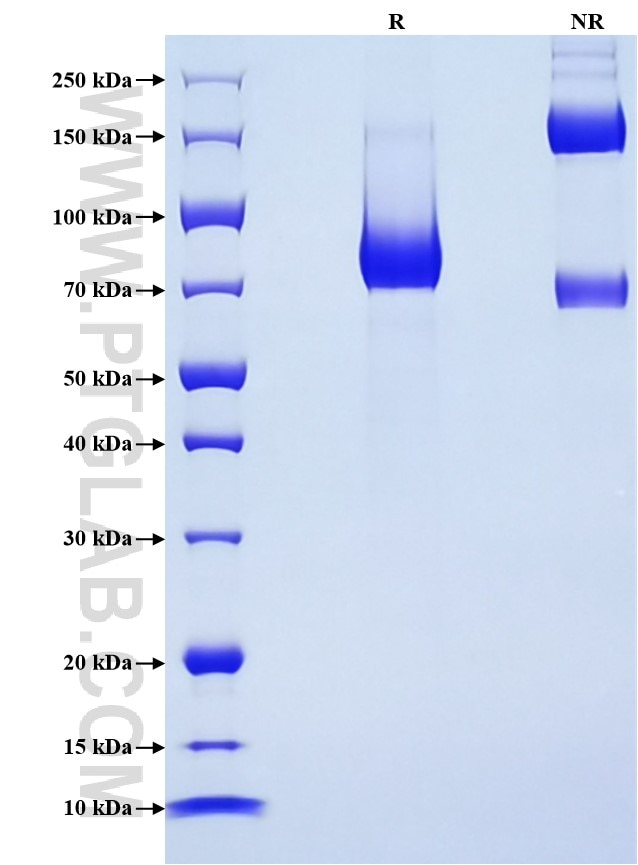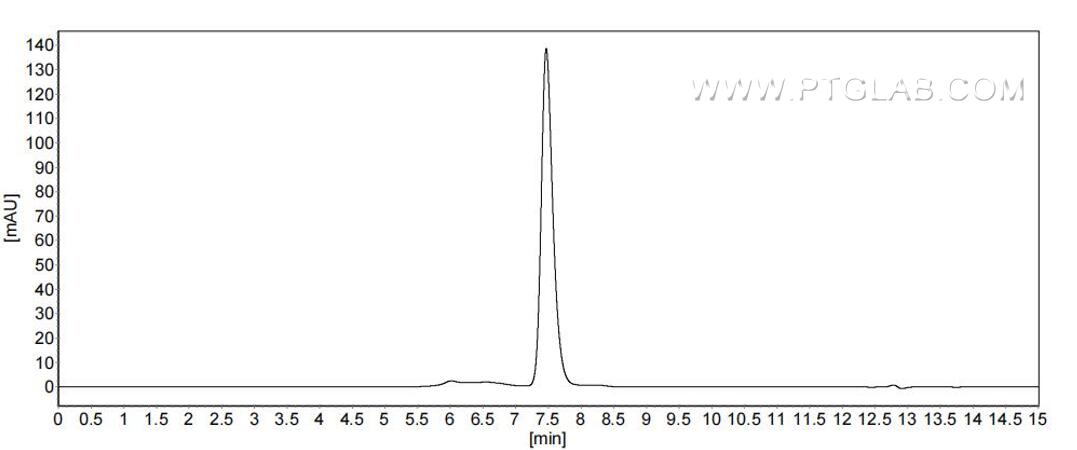Recombinant Mouse CD4 protein (rFc Tag) (HPLC verified)
Species
Mouse
Purity
>90 %, SDS-PAGE
>90 %, SEC-HPLC
Tag
rFc Tag
Activity
not tested
Cat no : Eg3847
Validation Data Gallery
Product Information
| Purity | >90 %, SDS-PAGE >90 %, SEC-HPLC |
| Endotoxin | <0.1 EU/μg protein, LAL method |
| Activity |
Not tested |
| Expression | HEK293-derived Mouse CD4 protein Lys27-Thr394 (Accession# P06332-1) with a rabbit IgG Fc tag at the C-terminus. |
| GeneID | 12504 |
| Accession | P06332-1 |
| PredictedSize | 67.5 kDa |
| SDS-PAGE | 70-80 kDa, reducing (R) conditions |
| Formulation | Lyophilized from 0.22 μm filtered solution in PBS, pH 7.4. Normally 5% trehalose and 5% mannitol are added as protectants before lyophilization. |
| Reconstitution | Briefly centrifuge the tube before opening. Reconstitute at 0.1-0.5 mg/mL in sterile water. |
| Storage Conditions |
It is recommended that the protein be aliquoted for optimal storage. Avoid repeated freeze-thaw cycles.
|
| Shipping | The product is shipped at ambient temperature. Upon receipt, store it immediately at the recommended temperature. |
Background
T cell surface glycoprotein CD4, the global membrane glycoprotein, plays an important role in the immune response, performing multiple functions in response against external and internal attacks. CD4+ T cells are the main cells involved in the acquired immune response and play an important role in body development and homeostasis. Upon T cell antigen receptor stimulation and the synergistic activity of cytokines, naive CD4+ T cells differentiate into distinct subsets, including Th1, Th2, Th17, and regulatory T (Treg) cells.
References:
1. Kurup S, et al. Nature reviews Immunology. 2019;19:457–71. 2. J B, et al. Nature reviews Immunology. 2018;18:635–47.

